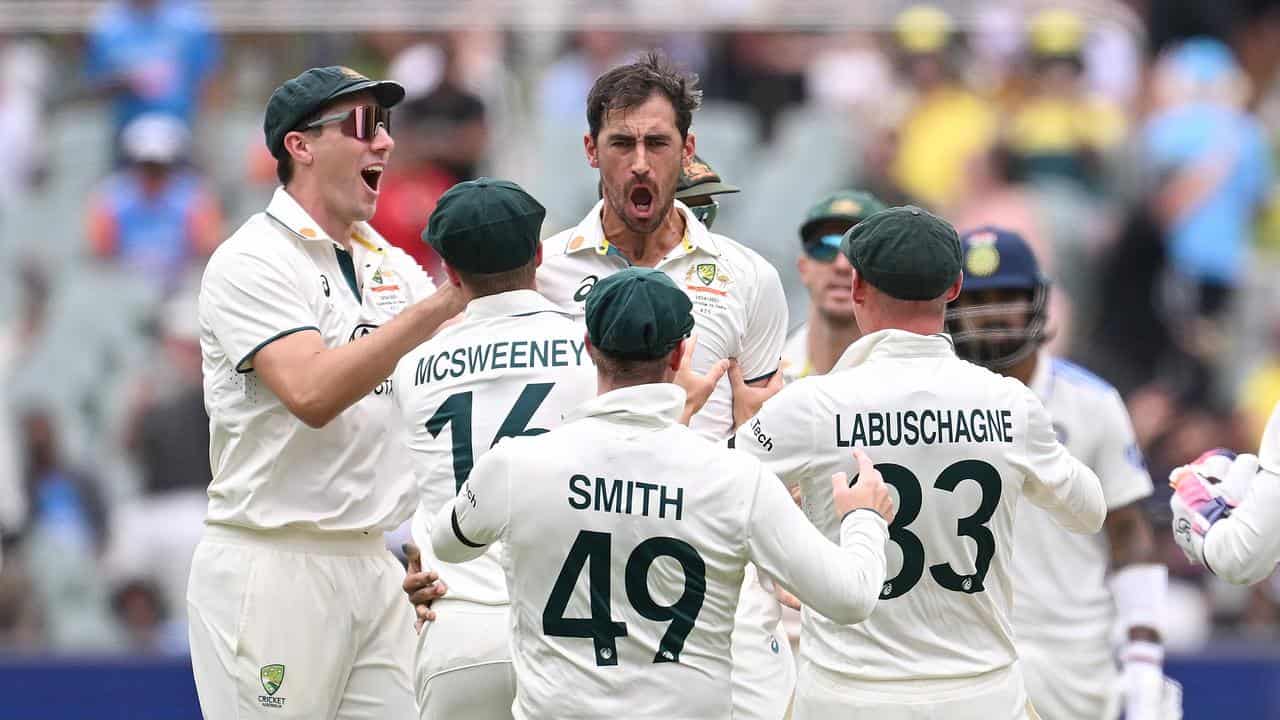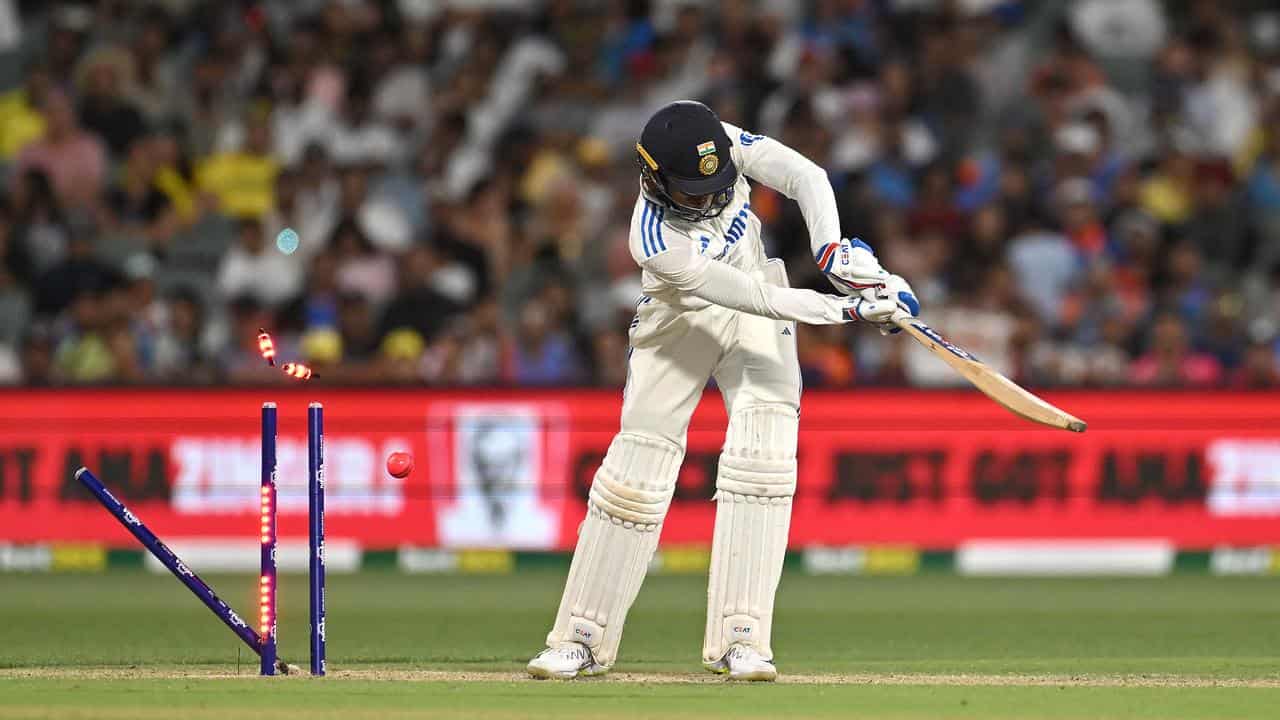The 140-year first clouding this Border-Gavaskar battle

It has been 140 years since Test cricket has been plagued by so many early finishes, but Australia captain Pat Cummins doesn't want this helter-skelter era to prompt a change towards four-day Tests.
Saturday's heavy rain at the Gabba looms as the best chance of sending a match to five days this summer, after two rapid-fire Tests to start the Border-Gavaskar Trophy series.
Day one in Perth brought 17 wickets as the match hurried to a day-four finish, before a 14-wicket second day in Adelaide helped that game be complete by the first session on day three.
Rain aside, the Gabba has traditionally been a faster-moving venue in recent years, with only one of the past four Tests there going into the second half of day four.
Alarmingly for the sport's bean counters, who forgo significant revenue when Tests don't go the distance, the trend is nothing new.
In the past three-and-a-half summers, only four Tests in Australia have reached the final day, with two of those rain-affected.
Data also shows a recent drop in the number of overs per Test in Australia across the past decade, while the past two summers have had the least balls bowled per Test since 1887-88.
Globally, the situation is similar.
Some 58 per cent of matches have ended before the fifth day this decade, with balls bowled per Test at its lowest point since the 1880s.
"It is funny, the wickets are definitely a bit juicier in the past few years. They have been played at a faster pace," Cummins said.
"You always go into a Test thinking it is going to go five days. But the most important thing is if it does speed up, making sure you can adapt quickly."
The opening two Tests of this summer have lasted an average of 243 overs, compared with the 395 per match during the 2014-15 Border-Gavaskar Trophy.

Early finishes have prompted former England captain Michael Vaughan and others to reignite the push to make four-day Tests commonplace, allowing for a Thursday-Sunday schedule.
The International Cricket Council has previously discussed making four-day Tests mandatory, having dipped its toe into the experiment in 2017 and 2019.
ICC rules allow nations to play a four-day match, but only in fixtures that do not count towards the World Test Championship.
Host boards generally lose money in shorter Tests, through catering costs and decreased gate takings.
CA does not incur financial losses in broadcast rights deals for matches finishing early, while industry insiders suggest advertising slots and revenue for networks remain fixed.
But shorter Tests have the potential to cause headaches for advertisers and broadcasters, potentially impacting future rights dollars.

A belief also remains that four-day Tests would allow for more three-match series, given matches could be squeezed into a tighter time frame.
Those against the move point to the high percentage of draws in women's four-day Tests, the potential for bad weather to quickly ruin a contest, and how Test length varies so much around the world.
Since Test cricket returned to Pakistan in 2019, some 12 of 18 games have reached a fifth day, usually on batter-friendly pitches.
"It's a pretty good format," Cummins said.
"In terms of length of game, it doesn't really bother me. I always like five days."
AVERAGE BALLS PER TEST:
1870s: 1586
1880s: 1667
1890s: 1939
1900s: 1803
1910s: 1791
1920s: 2247
1930s: 2127
1940s: 2378
1950s: 2283
1960s: 2409
1970s: 2255
1980s: 1987
1990s: 2018
2000s: 1975
2010s: 1953
2020s: 1791